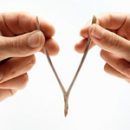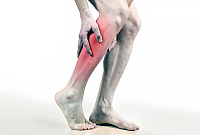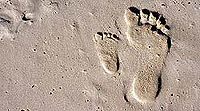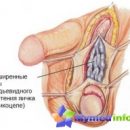Congenital dislocation of hips - occurs in children quite often. Only a specialist can diagnose it, but to suspect its presence in a child can and parents, you just need to know some symptoms.
Content
 Congenital dislocation hips is a heavy congenital defect. This disease occurs in girls in 5–10 times more often than boys. Bilateral defeat occurs at 1.5–2 times less frequently.
Congenital dislocation hips is a heavy congenital defect. This disease occurs in girls in 5–10 times more often than boys. Bilateral defeat occurs at 1.5–2 times less frequently.
Previously it was believed that congenital dislocation of the thigh – This is the result of injury, or some inflammatory process. These theories are currently left. Numerous modern studies have shown that the displays is based on the congenital dislocation of the thigh (t. E. Violation of the normal development of elements of the hip joint) during the period of intrauterine development. These primary disorders cause secondary - underdevelopment of the bones of the pelvis, the displacement of the head of the hip, slowing the ossification (compliance) of the bone elements of the joint and others.
The hip joint is located deeper than other joints, is surrounded by a more powerful layer of muscles, so even thin children are little accessible for research. When recognizing diseases of the hip joint and, above all, violations of the correct relationship of the depressions and the upper end of the femur has to be based anymore on indirect signs.
Congenital dislocation hips - how to detect it?
Careful study of clinical symptoms When examining children of early breasts, it makes it possible to suspect a violation of the proper development of the hip joint. Nevertheless, on the basis of only some clinical signs, it is difficult to diagnose in this age. As the child grows and the progression of pathological changes in the hip joint, the diagnosis of congenital dislocation and the subscription becomes easier, but the consequences of the lack of timely treatment for the child, to put it mildly, more tangible.
The main symptoms of the congenital dislocation of the thigh:
- Symptom of clicking (it is also called symptom of scaling, symptom of instability)
Study must conduct a specialist. Symptom detect when the child's position on the back. His legs bend in the knee and hip joints, the thumbs of the study are located on the inner, and others on the outer surface of the thigh. This symptom is detected in two ways: In some cases, the head is made in the depression, in others — Her disgusting.
Normally click. Sometimes during the examination, the crunch in the knee joints is heard, for small children is the norm. It is due to the inconsistency of the growth rate of bones and joint ligaments.
In the presence of a disease (t.E. With a positive symptom of clicking), it is felt like a piston-like sliding of the head of the femoral bone, a click is heard. Symptom click — The sign of an unstable hip joint is characteristic of newborns and often even in the untreated children disappears to the 7th - 10th day. Sometimes a click symptom is saved for a longer period (1 – 2 months). However, in recent years, in connection with the wider use of methods of therapeutic gymnastics in infants, there is a longer preservation of a click symptom, so the frequency of it when dislocation tends to increase, and this symptom is often preserved to 3–6 months.
- Restriction of Hipper
This symptom is almost always noted under this pathology on the 1st year of life.
It is also revealed when the child's position on the back. To identify the restriction of the child's lead, bend in hip and knee joints. The fingers explores the area of the knee joints and without violence spreads the legs of the child to the sides.
In the norm of the hip in the hip joint in the children of the first months of life easily dismissed to the angle of 80–90°. At this age, breeding more depends on the tone of the resulting muscles than from the anatomical changes in the joint. This symptom is often found with other diseases and even normal. Children in the first months of life there is a physiological (natural) increase in muscle tone, which gives a picture of the restriction of movements in various joints, including in the hip. The restriction of the hip diversion can meet in spastic paralymps, pathological dislocation of hips and other diseases.
- Asymmetry of berium folds
This symptom is determined when the child's story on the stomach. Pay attention to the level of berical folds, which, with one-sided lesion, can be located at a different level and have a different degree of depth. This symptom can be observed with congenital dislocation and thigh submission and with various other diseases. The sign is sufficiently dubious, especially if you consider that little who manage to persuade the child to lie down exactly, do not spin and not spin.
- Shortening of the lower limb
In newborns and children of the first months of life, this sign is extremely rare and only with high hips dislocations. It is revealed when examining a child, as it is almost impossible to determine shortening in several millimeters with a centimeter tape is almost impossible. The relative shortening of the leg can be revealed as follows: the feet of the child bend in the knee and hip joints, the difference in the length of the legs is judged at different levels of the location of the knee joints.
- Outdoor rotation of the foot
At the same time, the symptom of stops as if turned outward. This sign occurs on the side of the dislocation, is especially noticeable during the sleep of the child, and the mothers often pay attention to it. But it should be borne in mind that the outer rotation of the feet may occur with normal hip joints. Outer closure (Valgus Stop Walgus) can sometimes create the visibility of the external turning (outdoor rotation) of the lower limb.
In children over a year, there are additional symptoms of this disease, such as a breakdown of a gait, a symptom of Duceda-Trendelenburg (symptom of insufficient muscles), high standing of a large spit (above the roser-nonlaton line), a symptom of an unproken pulse.
Crucial importance in diagnostics has ultrasound–Diagnosis and radiography of hip joint.
 There are two basic methods of treating this pathology: conservative and operational (T.E. surgical). If the diagnosis is made on time and correctly, conservative treatment methods are applied. In this case, the child is individually selected tire, which allows you to keep the legs of the child in the position of bending in the hip and knee joints at right angles and leads in the hip joints, which contributes to their proper development and formation.
There are two basic methods of treating this pathology: conservative and operational (T.E. surgical). If the diagnosis is made on time and correctly, conservative treatment methods are applied. In this case, the child is individually selected tire, which allows you to keep the legs of the child in the position of bending in the hip and knee joints at right angles and leads in the hip joints, which contributes to their proper development and formation.
The thigh head can occur slowly, gradually, atraumatic. Every violence is unacceptable, as it easily damages the head of the hip and other tissues of the joint.
Conservative treatment of children with congenital prevention, sublifting and dislocation of the thigh is the leading method. The earlier it is possible to achieve a comparison of the master's depressions and the head of the hip, the better the conditions are created for the right further development of the hip joint. An ideal deadline for the start of treatment should be considered the first days of the child's life, t. E. Then, when secondary changes in the depression and the proximal end of the femoral bone are minimal.
However, conservative treatment is applicable and in case of late diagnosis in older children, even over 1 year old, t. E. Then, when there is a hip dislocation. Diagnostics and treatment of children with a pre-election, sketch and dislocation of the thigh should be made in the first 3 months of life, it is considered late.
Operational interventions are carried out, as a rule, with soased dislocation. This is a large separate direction in Surgery.
Currently, it is not recommended to twist children «Soldier», to «The legs grew smooth». The legs from this grow smaller will not start, but the hip joints will develop worse. Better, child swaded wide, so that the legs would be divorced to the sides, and they could be stirred, as the baby will do. For this, it is impossible to better approach disposable diapers in combination with suites. If you use gauze diapers and diapers, then the gauze should be folded in four or more layers, and the diapers are not tightened tight. Wide-sweltering method allows all elements of hip joints to develop wonderful. In the absence of contraindications, massage and gymnastics courses are also recommended.
Thus, congenital dislocation of the hip is a serious disease, which, in the absence of treatment, leads to difficult consequences, therefore, for its identification, careful inspection of children with pediatricians, both in the maternity hospital and after discharge from it. In all dubious cases, when there is at least the only indirect symptom of this disease, a consultation of an orthopedic doctor is necessary. Initially started and properly conducted treatment is the key to a favorable outcome of this disease.









